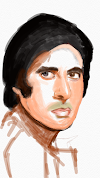Why We Use More Oxygen: From Nursery to PhD to NASA
Oxygen is essential for all life forms, but its requirements vary depending on age, physical activity, and specific situations like those encountered in space exploration. This article explains why our oxygen needs change as we grow and what special conditions require increased oxygen consumption.
1. Oxygen and Its Role in Human Life
Oxygen (O₂) is a critical element that our body needs to function. It is essential for cellular respiration, the process by which our cells produce energy. This energy allows us to grow, move, think, and maintain basic bodily functions.
Every organ in our body relies on oxygen to function efficiently, especially the brain and heart. Without oxygen, cells would not be able to perform their roles, and life would cease to exist.
2. Oxygen Requirements from Nursery to Childhood
When babies are born, they take their first breath, filling their lungs with oxygen that is crucial for their survival. Infants require more oxygen relative to their body size because their metabolism is rapidly growing. Oxygen is vital for the development of the brain, organs, and muscles during the first few years of life.
In early childhood, a child’s lungs and blood circulation improve, but they still need more oxygen per kilogram of body weight compared to adults. This helps with energy production as they grow and play, requiring oxygen to fuel their increased activity levels.
3. Oxygen Use in Adolescence
As children reach adolescence, they go through periods of rapid physical growth and heightened energy needs. Increased activity such as sports and academics demands more oxygen to fuel the brain and muscles. This is when teenagers experience a surge in oxygen demand, particularly during physical exertion and periods of cognitive stress (e.g., studying or exams).
4. Adult Oxygen Requirements
As adults, our oxygen consumption stabilizes, but it is still influenced by various factors such as physical fitness, health conditions, and activity level. For example, athletes use more oxygen during intense training or competition because their muscles require more energy to perform at higher intensities.
Adults generally need less oxygen per kilogram of body weight than children or infants, but lifestyle factors like smoking, obesity, or a sedentary lifestyle can decrease lung efficiency and increase the need for supplemental oxygen.
5. Oxygen in Older Adults and the Elderly
As we age, the body’s efficiency in utilizing oxygen can decline. This is due to various factors such as reduced lung capacity, weakening muscles, and a slower metabolic rate. Older adults may require more oxygen to maintain the same levels of energy as when they were younger, especially if they have health conditions like COPD (Chronic Obstructive Pulmonary Disease) or heart disease.
Additionally, oxygen is crucial for the elderly to prevent fatigue and maintain cognitive function. Lack of oxygen can contribute to feelings of dizziness, confusion, and general weakness.
6. Oxygen and Physical Exertion
Oxygen consumption increases significantly during physical exertion. When you exercise, your muscles need more oxygen to produce the energy necessary for movement. This is why we breathe harder and faster when engaging in physical activity—our body is trying to meet the increased demand for oxygen.
For example, athletes who train at high altitudes require more oxygen because the atmospheric oxygen is thinner at higher elevations. This is why athletes use supplemental oxygen or train in lower-oxygen environments to adapt and improve their endurance.
7. Oxygen in Space Exploration
Oxygen needs change drastically in space due to the absence of an atmosphere. In space, astronauts rely on oxygen tanks and life-support systems to supply them with breathable air, as the vacuum of space has no oxygen. Space agencies like NASA provide astronauts with controlled environments where oxygen levels are carefully maintained to avoid hypoxia (insufficient oxygen) or hyperoxia (too much oxygen).
The unique challenges of space require astronauts to manage their oxygen consumption and respiratory rates in ways that are much more controlled than on Earth. Space missions, particularly long-duration missions to Mars, will require advanced oxygen production and recycling systems to ensure that astronauts can maintain healthy oxygen levels for months or even years.
8. Hyperbaric Oxygen Therapy
Hyperbaric oxygen therapy (HBOT) is a medical treatment that involves breathing pure oxygen in a pressurized room or chamber. This is used to treat a variety of conditions, such as decompression sickness, carbon monoxide poisoning, and chronic wounds. In these situations, the body’s need for oxygen is so high that additional oxygen is provided to speed up recovery and healing.
In HBOT, the high-pressure environment allows the lungs to absorb more oxygen than they would at normal atmospheric pressure, increasing the oxygen available to tissues throughout the body.
9. The Future of Oxygen in Medicine and Technology
As technology and medical science progress, our understanding of oxygen's role in health and disease continues to evolve. For example, scientists are exploring how manipulating oxygen levels in the body can treat various diseases, from cancer to neurodegenerative conditions.
In the future, technologies like artificial lungs or advanced oxygenation devices could play an even more significant role in improving human health and extending lifespans.


















0 Comments